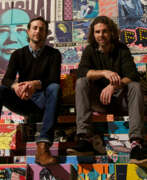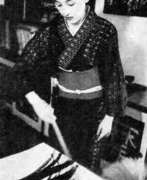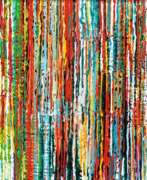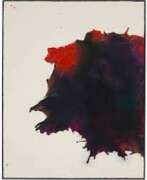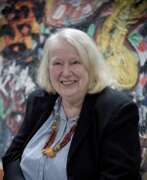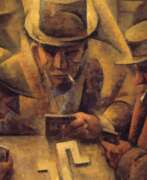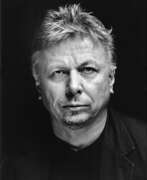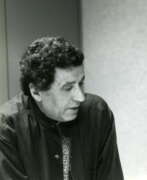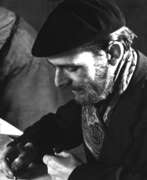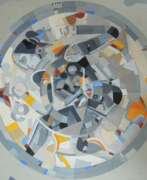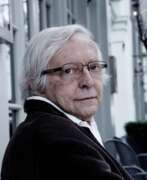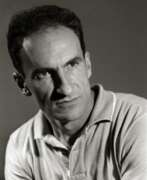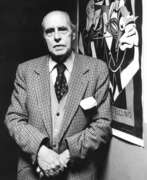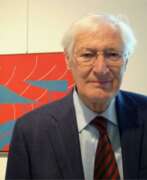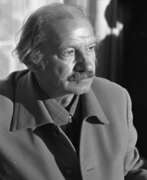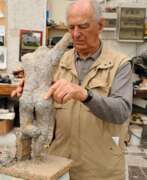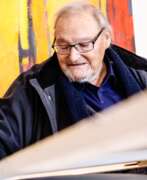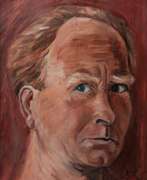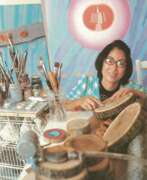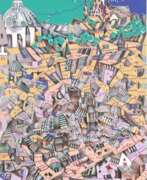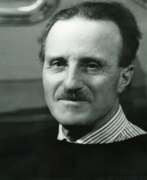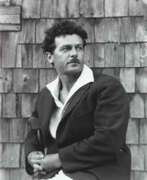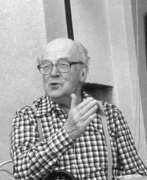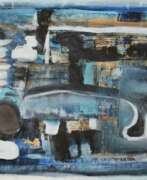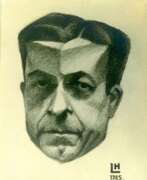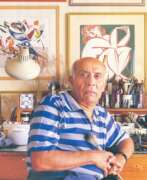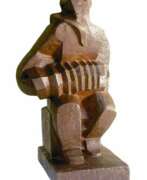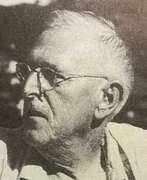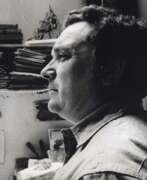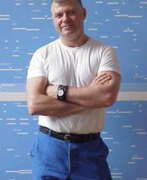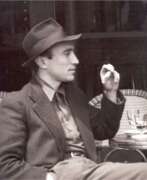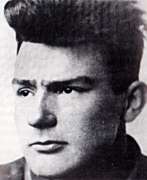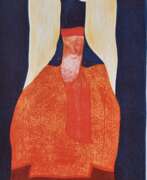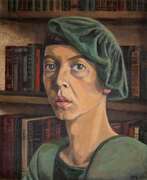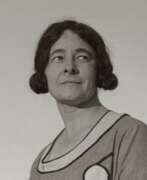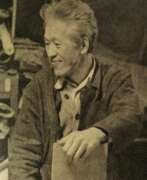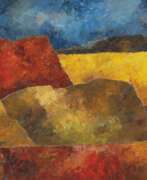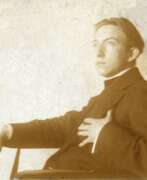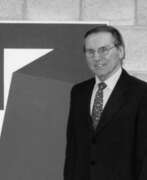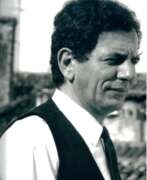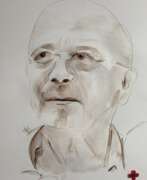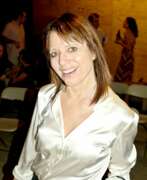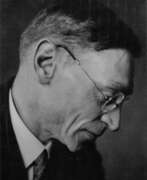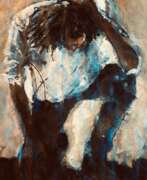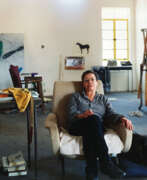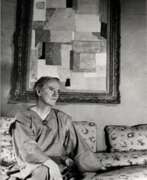Engravers Abstract art


Franz Ackermann is a German media artist.
He studied at the Academy of Fine Arts in Munich and at the University of Fine Arts in Hamburg, lives and works in Berlin and Karlsruhe.
Franz Ackermann's work includes drawings, watercolors, murals, paintings and installations, which he complements with photographic works, projections and architectural models. His works deal with the themes of tourism, globalization and urbanism and reflect the social changes and political problems caused by increasing globalization.
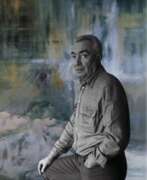

Giuseppe Ajmone was an Italian painter and printmaker.
He studied painting at the Brera Academy of Fine Arts in Milan and in 1946 was one of the signatories of the Realist Manifesto, also known as "Oltre Guernica.
Ajmone painted both landscapes and still lifes as well as semi-abstract figures.
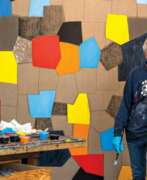

Charles Arnoldi is an American painter, sculptor and printmaker.
In the early 1970s, the artist attracted attention for his wall-relief wood sculptures, such as Honeymoons in the collection of the Honolulu Museum of Art.
The use of wood remained a feature of Arnoldi's oeuvre, although, since the 1980s, he has often employed it in combination with other media. In the 1990s, Arnoldi's output changed radically. He began producing abstract paintings on canvas, first black and white, and later brightly colored.
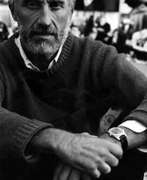

Ugo Attardi was an Italian painter, sculptor and writer. Attardi moved from Genoa to Rome in the early 1950s, where he formed the group Forma 1 together with other artists. His sculpture of Ulysses is now permanently installed in Battery Park in New York
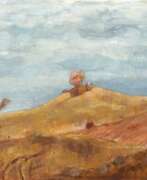

Siegfried Berndt, born 1880 in Germany and passing away in 1946, was a distinguished painter and printmaker whose artistic contributions are often overlooked in art history. After studying at the Dresden Art Academy, Berndt received a travel scholarship that profoundly influenced his art, taking him to cities like Paris, Brussels, Antwerp, London, and Scotland. These travels exposed him to diverse artistic movements, enriching his work with elements of Impressionism, Expressionism, and New Objectivity.
Berndt was especially skilled in the traditional Japanese woodblock printmaking technique, which he employed to explore various artistic styles. This unique approach resulted in color woodcuts with a distinct personality, appealing to a wide range of collectors. His woodblock prints are particularly noted for their innovative use of this traditional technique, blending it with Western artistic movements.
Despite the challenges posed by the two World Wars, Berndt's work found its way into public collections and was recognized for its artistic merit. However, much of his pictorial work was lost due to the turmoil of war. Some of his expressive pastel works, often repeated with small variations, as well as oil paintings, have been documented.
Berndt's art remains relevant for collectors, auctioneers, and experts in art and antiques, particularly for those interested in the intersection of Eastern and Western printmaking techniques. His work, although not as widely known, represents a unique blend of styles and techniques that contribute to the rich tapestry of early 20th-century art.
For enthusiasts interested in staying updated about sales and auction events related to Siegfried Berndt's work, subscribing to updates would be beneficial. This ensures access to the latest information about new sales and auction events related to his art.


Arun Bose was a prominent Indian artist born in Dhaka, then part of British India (now Bangladesh). He received his art education in Calcutta at the Government College of Arts and Crafts, graduating in 1955. Thereafter, he actively created and taught in Calcutta for the next seven years. In 1962, he travelled to the West where he learnt etching and studied mural techniques at the École Nationale Supérieure des Beaux-Arts in Paris. His many prints were made in aquatint and etching techniques with simultaneous colour printing. He later moved to New York, where he studied at the Pratt Graphic Centre and in 1968 received a scholarship from the Third John D. Rockefeller. He was also part of Robert Blackburn's workshop and taught printmaking himself at Queens College.
Arun Bose's paintings and prints are characterised by bright colours and abstraction, making his work unique and important in the art world.


James Brown was an American-born painter active in Paris and Oaxaca, Mexico. He was most well known in the 1980s for his rough painterly semi-figurative paintings, bearing affinities to Jean-Michel Basquiat and East Village painting of the time, but with influences from primitive art and classical Western modernism. His work has taken on several styles over the years but maintains a hand-made look combining concerns of the modernist tradition with motifs and spiritual interests from tribal art. Much of his work is a non-realistic but contains depictions or signs of recognizable faces or objects. However, the line between representation and abstraction is often a difficult one in his work. Besides paintings Brown has also produced sculptures and series of prints at various points in his career, and in the 1990s started to heavily utilize collage.
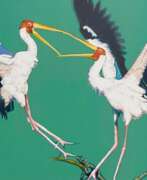

Fran Bull is an American sculptor, painter, and print-maker living and working in Brandon, Vermont and Barcelona, Spain. Bull became known originally for her Photorealism paintings made in the mid 1970s and 80s. In the late 1980s, Bull’s art began to develop towards abstraction, or neo-abstract expressionism. Sparked by her newfound approach to painting, in the mid-1990s Bull began to explore other media. Since that time her artistic output has included performance art, sculpture, mixed media, and printmaking, as well as painting. She has been especially prolific in the area of printmaking. Bull has produced many diverse series of etchings that continue to be exhibited worldwide.


Arturo Carmassi was an Italian abstractionist painter, sculptor, and printmaker.
He studied at the Albertina Academy in Turin. Carmassi created many images, sculptures and engravings on metal and worked in lithography and silkscreen. He has participated in numerous exhibitions and biennales and is an internationally recognized sculptor.
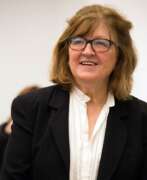

Vija Celmins is a Latvian-American artist. She is best known for her photorealistic paintings and drawings of natural and man-made objects.
Celmins and her family fled Latvia during World War II and eventually settled in the United States. She studied art at the John Herron School of Art in Indianapolis and later at the University of California, Los Angeles.
Celmins began her career as a painter in the 1960s, and by the 1970s she had developed her signature style of photorealism. She is known for her painstaking attention to detail, and her paintings and drawings often take months or even years to complete. Some of her most famous works include images of the night sky, oceans, and rocks.
Celmins has been the subject of numerous solo exhibitions in museums and galleries around the world, including a retrospective at the Centre Pompidou in Paris in 2006. Her work is held in the collections of many major museums, including the Metropolitan Museum of Art in New York, the Museum of Modern Art in New York, and the National Gallery of Art in Washington, D.C.


Alfredo Chighine was an Italian painter and sculptor of the Informel movement.
His art has evolved from early scribbled lines to vivid and lively precision paintings. In recent years Chighine has achieved his main goal: brightness, surface texture and flowing lines.


Prunella Clough was a prominent British artist. She is known mostly for her paintings, though she also made prints and created assemblages of collected objects. She was awarded the Jerwood Prize for painting, and received a retrospective exhibition at Tate Britain.
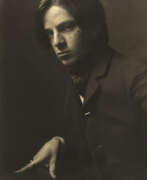

Alvin Langdon Coburn was an American photographer and artist who was best known for his pioneering work in the field of pictorial photography. He was a member of the Photo-Secession movement, which was a group of photographers who sought to elevate photography to the status of fine art.
Coburn was born in Boston, Massachusetts, and grew up in England. He began taking photographs when he was just eight years old and later studied photography in New York City. He went on to become one of the leading photographers of his time, and his work was exhibited widely in Europe and the United States.
Coburn is perhaps best known for his innovative use of the "vortograph," a technique he developed in 1917 that involved photographing objects through a triangular arrangement of mirrors. The resulting images were highly abstract and geometric, and anticipated the work of many later artists, including the Surrealists.
In addition to his work in photography, Coburn was also an accomplished painter and printmaker. He continued to work as an artist throughout his life, and his work is now held in the collections of many major museums around the world.


Karin Davie is a contemporary artist who lives and works in New York City and Seattle, Washington. Davie is best known for her idiosyncratic twist on the modernist 'stripe' and looping hyperbolic abstractions. Her contemporary practice has been viewed in context with ideas of painting-as-performance from 1950s Abstract Expressionism and the 1960s Op Art.
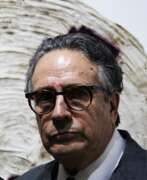

Juan Manuel de la Rosa is a painter, engraver, and ceramicist known for his works on handmade paper. He studied lesser-known techniques for painting and papermaking from Japan, Egypt, Fiyi and France; his handmade paper is typically made of linen, cotton, or hemp. With these traditional approaches, he creates layers and adds new dimensions to his artworks.


Fernando de Szyszlo Valdelomar was a Peruvian painter, sculptor, printmaker, and teacher who was a key figure in advancing abstract art in Latin America since the mid-1950s, and one of the leading plastic artists in Peru.


David Diao is a Chinese American artist and teacher based in New York City. He first won acclaim and public attention with an exhibition at Paula Cooper Gallery in 1969. He is known for his simplification of form, minimal compositions, and uses of stylized text and typography. Diao's work was included at dOCUMENTA 13. His work is featured in the collection of the Hirshhorn Museum and Sculpture Garden, MoMA, the Whitney Museum of American Art, SFMOMA, Rennes's public council collection, among others. Diao taught at the Cooper Union in the early 70s and was then mostly doing color field painting made by squeegying paint across a large canvas. In 2008 he had his first exhibition in China. In 2012, he was elected into the National Academy of Design. He received a Foundation for Contemporary Arts Grants to Artists award (2015).
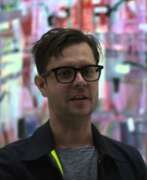

Tomory Dodge is an American artist. He graduated from the California Institute of the Arts in Valencia, California, in 2004. Before that, he had a solo show at the Taxter & Spengemann gallery in New York. He paints landscapes with a Surrealist influence, the paint applied broadly with a brush or palette-knife.


Bertrand Dorny is a French abstractionist artist, painter, printmaker and graphic designer.
Originally a painter, Dorny became interested in various techniques, particularly printmaking, in which he achieved great success and recognition. He created more than 650 engravings.
Dorny enjoyed working with wood and paper, from which he created intricate collages, reliefs, and assembled large wooden panels. He also worked in the field of book collage.
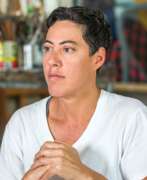

Nicole Eisenman is French-born American artist known for her oil paintings and sculptures. She has been awarded the Guggenheim Fellowship (1996), the Carnegie Prize (2013), and has thrice been included in the Whitney Biennial (1995, 2012, 2019). On September 29, 2015, she won a MacArthur Fellowship award for "restoring the representation of the human form a cultural significance that had waned during the ascendancy of abstraction in the 20th century."
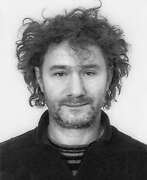

Kęstutis Grigaliūnas - Lithuanian graphic artist, art teacher. 1988-1989 created linen carvings, wood carvings, screen prints, etchings, illustrated books. Since 1990 one of the first Lithuanian graphic designers to use the color screen printing technique. Made a cut out of cardboard and plywood. It is characterized by a pronounced graphic beginning - lines, signs, ornaments, figurative and abstract motifs are used. Since 1998 creates more complex plastic graphic works and cut-outs, they feature postmodernism features, pop art, Fluxus elements, decorative, eclectic images. A playful mood, irony, and various intellectual references to the images of Lithuania and other cultures and civilizations prevail.


Mariann Grunder, or Susie Mariann Grunder, was a Swiss artist and sculptor. She created large wall reliefs with concrete elements. And her stone sculptures, which often deal with literary or mythological themes, combine elements of surrealism, abstraction and minimalism. Grunder has also done numerous drawings and prints.
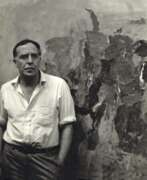

Philip Guston, born Phillip Goldstein, was a Canadian American artist, muralist, printmaker and draftsman. He was one of the most important exponents of abstract expressionism. He is considered a forerunner of the New Figurative Painting.
Philip Gaston was a member of the New York School, which included many representatives of abstract expressionism, such as Jackson Pollock and Willem De Kooning.


Hans-Uwe Hähn, born in 1955 in Kreuztal, Germany, is a distinguished contemporary German graphic artist, widely recognized for his exceptional contributions to the field of graphic arts. Educated at the Hochschule für Kunst Ottersberg and the Hochschule für Bildende Künste Hamburg, Hähn's career has been marked by an extensive array of solo and group exhibitions, both nationally and internationally. His notable involvement in the art community extends to being a member of Neue Gruppe München and XYLON International – German Section.
Hähn's work is characterized by its intricate exploration of graphic language and the woodcut technique. His artistic practice involves a unique blend of planning and spontaneity, allowing for creative conditions that transcend beyond the mere printing block. His woodcuts, often executed on canvas, are not just about the final print but represent the sum of the process's steps and stages. This approach results in artworks that are rich in transformations and bear a deep connection to the exploration of the linear relationship between feeling and trace. Notable works by Hähn include "Am blinden Kanal VI" and "Am blinden Kanal V," both woodcuts on canvas from 2011.
Hähn's works have been featured in various exhibitions, such as "Revierwechsel" at the Museum für Druckkunst in Leipzig, "Korrespondenzen" at the galerie isabella lanz in Zürich, and "Flug des Erträumten" at Podium Kunst in Schramberg. His artistic contributions have earned him a place in public and private collections, showcasing the reach and impact of his artistic vision.
Collectors, auctioneers, and art experts interested in the works of Hans-Uwe Hähn can stay informed about new product sales and auction events related to the artist by signing up for updates. This service is specifically designed to provide alerts on upcoming sales and events, helping enthusiasts and professionals in the field of art and antiques to remain connected with the latest developments in Hähn's artistic journey.
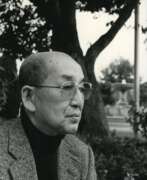

Yozo Hamaguchi was a Japanese artist and copperplate engraver who revived the almost forgotten technique of mezzotint by the 20th century.
He studied at the Tokyo University of Art, traveled to Europe, worked in Paris, and participated in exhibitions. Hamaguchi innovatively inserted bright colors into his black-and-white mezzotints, producing surreal and abstract paintings.


Fritz Harnest was a German painter, printmaker and collage artist. He was a creator of abstract modern art in Germany after World War II. Harnest studied at the Academy of Fine Arts, Munich from 1921 to 1929. He travelled frequently to France in 1930–1931 with the German painter Otto Baumann. He ceased painting after the Nazi seizure of power but later resumed his career, creating woodcuts and murals.


Burkhard Held is German painter living and working in Berlin, Germany. His art is based on figuration dissolving into abstraction. In 1993 he became professor at the Berlin University of the Arts and later served as a professor at the China Academy of Art in Hangzhou, PRC. Burkhard Held is a figurative painter, who dissolves his motifs – landscapes, portraits, flowers – into color fields with a strong tendency towards autonomy. His strongly colored all-over images reinterpret things as abstract and then lead the back into figuration. In 2009 Held started to dedicate himself to the subject of flowers: blossoms become compositions with a landscape character, and are distributed in equally strong colors across the canvas.
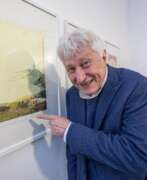

Dieter Huthmacher, born in 1947 in Pforzheim, Germany, is a renowned artist celebrated for his contributions to the world of fine art. His creative journey is marked by a diverse array of print graphics, where he skillfully blends color and form to create captivating works. Huthmacher's art is not only a reflection of his mastery in various techniques but also a testament to his deep understanding of artistic expression.
Throughout his career, Huthmacher has explored different themes and motifs, often experimenting with large formats and various color techniques. His works, primarily consisting of prints, have been featured in several auctions, indicating the consistent interest and value placed on his art in the collectors' market. Notable pieces like "Thalia," created around 1988, showcase his proficiency in color woodcut techniques and are representative of his artistic signature.
Dieter Huthmacher's works continue to be sought after, with auctions featuring over 25 graphic prints of various motifs, demonstrating his versatility and appeal in the art world. His creations have been presented in prestigious auction houses, resonating with collectors, auctioneers, and art enthusiasts alike.
For those interested in the world of art and antiques, particularly in the works of Dieter Huthmacher, staying informed about upcoming auctions and sales can be incredibly beneficial. By signing up for updates, you can receive timely information about new product sales and auction events related to Dieter Huthmacher's art, ensuring you never miss an opportunity to acquire a piece of his esteemed collection.
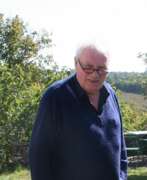

Rolf Iseli is a Swiss avant-garde artist living and working in Bern.
At the beginning of his artistic career, Iseli was a radical representative of Taschism and the Informel movement, and also painted in gesture technique. During his long life he has worked in different fields: painting, collage, drawing, lithography, drawing, plastic art, sculpture and art in architecture. Rolf Iseli is one of the most important representatives of the Swiss artistic avant-garde of the second half of the 20th century.


Vladimir Kokolia is a Czech painter-engraver, poet and lyricist, professor at the Academy of Fine Arts in Prague.
A versatile and talented artist, Kokolia has mastered many painting and graphic techniques and is known for his color linocuts.
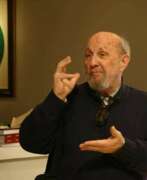

Riccardo Licata is an Italian artist known for his large mosaic paintings in public spaces in Europe.
He studied at the Academy of Fine Arts in Venice and was an active member of the international artistic movement "Space".
Licata showed his multifaceted talents in different fields of art: he worked on theatrical sets and costumes, was a sculptor and engraver, master of mosaics and a glass designer.
But his most important brainchild is the artistic language he created, a kind of alphabet consisting of symbols and graphic strokes that will characterize most of his works. These features, which Licata himself defines as imaginary letters, "graphic and pictorial writing" that draws inspiration from the language of music, are used by the artist to create works that will make him famous.
Licata lived and worked in Paris and Venice, was appointed professor of mosaics at the Ecole Nationale Supérieure des Beaux-Arts in Paris, professor of fine arts at the Sorbonne and of printmaking at the Académie Götz (Paris).
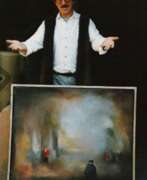

Werner Lichtner-Aix was a German painter, graphic artist, sculptor, and graphic designer.
Inspired by the idea of community and the close connection between man and nature, the artist painted exhilarating landscape paintings using a variety of techniques. He created many works of art, including oil, watercolor and gouache paintings, collages and sculptures.
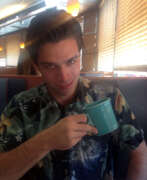

Israel Lund is a conceptual painter based in Brooklyn, New York. He creates acrylic paintings using a combination of digital and analog techniques including silk-screening; digital painting; and the manipulation of photocopies, photographs and PDFs through smartphone applications. His practice has been described as its “own distinctive kind of post-digital abstraction.”
Lund's work concerns the “modularity and scalability” of analog painting. As described by critic and art historian Alex Bacon, Lund's paintings evoke an uncanny “screen-space” that is produced in an “analog-mode” via a silk-screening process, a concept that the artist refers to as “analog.jpg”. In his recent work, this process involves imprinting the palette knife through a silk screen onto the warp and weft of raw, coarse canvas. The result is a dappled or “pixelated” miasma of cyan, magenta, and yellow.


André Marfaing was a French artist known for his abstract paintings and prints.
Marfaing's work was heavily influenced by the Abstract Expressionist movement in the United States, which he discovered during a trip to New York in the early 1950s. He became interested in the potential of color and texture to convey emotion and mood, and he began to develop his own distinctive style characterized by bold, geometric forms and a limited palette of earthy tones.
Marfaing's work often featured large, block-like shapes that seemed to float or hover against a background of textured color. He worked primarily in oil on canvas, but also produced prints and drawings that reflected his interest in the relationship between line and form.
Throughout his career, Marfaing exhibited his work extensively in France and internationally. He was also awarded numerous prizes and honors.
Marfaing's work can be found in many private collections and museums, including the Museum of Modern Art in New York, the Centre Georges Pompidou in Paris, and the Guggenheim Museum in Bilbao.


Emily Mason is an American abstraction artist and printmaker. She began her training under her mother Alice Trambal Mason, a pioneer of American abstraction and founder of American Abstract Artists. Emily Mason's work is based on abstract expressionism and color field painting. Her work can be found in many public and private collections.
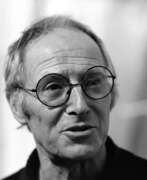

Lei Molin or Leopold Hubertus Molin was a Dutch painter, draftsman, engraver, and sculptor.
He was educated at the School of Applied Arts in Maastricht and at the Académie Julian in Paris. In the early period Molin worked in the style of Impressionism. Later, while living in North Holland, he joined the so-called Amsterdam Limburgers.


François Morellet was a French contemporary abstract painter, sculptor, and light artist. His early work prefigured minimal art and conceptual art and he played a prominent role in the development of geometrical abstract art and post-conceptual art.
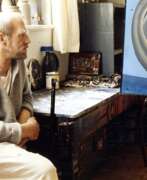

Johann Georg Müller was a German painter and graphic artist. He was studied at the Academy of Fine Arts in Munich.
Müller's work was heavily influenced by the Expressionist and Surrealist movements, and his paintings and graphic works often featured bold colors and abstract, dreamlike imagery. He was known for his use of symbolic motifs and his interest in mythological and religious themes.
During World War II, Müller was drafted into the German army and served on the Eastern Front. After the war, he returned to Munich and resumed his artistic career. He became a member of the German Expressionist group "Die Neue Gruppe" and participated in several exhibitions throughout Europe.
His work continues to be exhibited and studied around the world, and his legacy has had a significant impact on the development of modern and contemporary art in Germany and beyond.
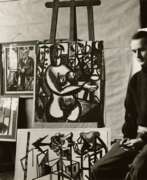

Hermann Naumann, a distinguished German artist, has made significant contributions to the fields of painting, graphics, illustration, and sculpture. Starting his artistic journey with a stonemasonry apprenticeship, Hermann Naumann later honed his skills in sculpture under the guidance of Burkhart Ebe and Herbert Volwahsen at the HBK Dresden. Over time, he expanded his artistic repertoire to include painting and graphic arts, embracing techniques like lithography, etching, and punch cutting.
Hermann Naumann's works are celebrated for their depth and versatility, reflecting his mastery over various mediums. Notably, his illustrations for literary works, such as Heinrich Böll's "Erzählungen" and Franz Kafka's "Betrachtung," showcase his exceptional ability to complement and elevate textual narratives through visual art. His public sculptures, like the relief in Dresden and the "Fahnenschwinger" in Riesa, further attest to his prowess in creating engaging and meaningful art.
For art collectors and enthusiasts, Hermann Naumann's oeuvre offers a rich tapestry of visual narratives, each piece echoing the artist's profound engagement with his subjects and mediums. Those interested in exploring Hermann Naumann's artistic journey and his contributions to German art and culture are encouraged to stay updated on exhibitions, sales, and auctions featuring his work.


Otto Wilhelm Nebel was a German avant-garde artist, poet, and actor. He spent his youth during the years of the First World War, which he spent on the Eastern and Western fronts of Germany. In 1918, while serving a 14-month military imprisonment in England, Nebel wrote an expressionist poem condemning the war, Zuginsfeld.
In 1919 he returned to Berlin and became acquainted with Wassily Kandinsky, Paul Klee, Georg Mouche, Kurt Schwitters and their art.
Nebel's "Middle East" series, the result of his trip to the Middle East, is well known. On 60 large-format sheets, the artist depicted figures resembling Arabic or Cyrillic letters. Later he became interested in the technique of reverse painting on glass and created bright and colorful abstract compositions on glass panels.


Ben Nicholson, an English artist, is celebrated for his significant contributions to abstract art. Born into an artistic family, Nicholson's work evolved from figurative art to embrace and lead in the development of abstract art in Britain. His early career was marked by experimentation with Cubism and interaction with influential artists like Barbara Hepworth, Henry Moore, Piet Mondrian, and Pablo Picasso, which profoundly shaped his artistic direction.
Nicholson's art is notable for its sensitive balance of tone and texture, employing dynamic and rhythmic lines that abstractly reference architectural forms and societal structures. His technique involved meticulous carving, painting, and the innovative use of color, especially in his later works where he explored the interplay of light and form to create poetic, abstract landscapes. His contributions were not just confined to his own practice; through collaborative projects and influential writings, he played a pivotal role in the discourse of modernist art, advocating for abstract art's broader appreciation.
Noteworthy pieces of Nicholson's work, including "March 1963 (Archimedes)" and "June 1961 (green goblet and blue square)," among others, are housed in prestigious collections like the Tate Gallery, Tate St Ives, Kettle's Yard Art Gallery in Cambridge, The Hepworth Wakefield, Pallant House Gallery in Chichester, and the Pier Arts Centre in Stromness, Orkney.
Nicholson's legacy as a pioneer of abstract art in the UK is secured through his innovative approaches and influential partnerships, which have left an indelible mark on the landscape of 20th-century art. His work continues to inspire and resonate, reflecting a deep understanding of the abstract's power to express the complexities of human experience and the natural world.
For collectors and experts in art and antiques interested in the pivotal movements of 20th-century art, Ben Nicholson's oeuvre offers a rich field of study and appreciation. To stay updated on new product sales and auction events related to Ben Nicholson's work, signing up for updates is a step towards deepening your understanding and appreciation of this key figure in modernist art.
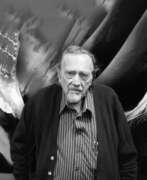

Leonardo Nierman, full name Leonardo Nierman Mendelejis, is a Mexican artist known mainly for his paintings and sculptures. His work is abstract yet still contains visible images of nature such as birds, water, lightning and more. His paintings are in pure colours, while his sculptures are usually in metal, often with a silver hue.
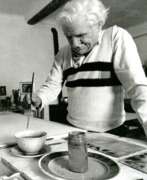

Mario Nigro was an Italian painter, draughtsman and printmaker who is considered one of the most important representatives of postwar geometric abstraction in Italy.
In the 1940s, he studied chemistry and pharmacology at the University of Pisa and simultaneously studied music and painting. In the 1950s Mario Nigro decided to devote himself entirely to painting and sought quasi-musical dynamics in his abstractions.
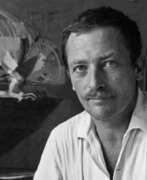

Alejandro Jesús Obregón Rosės was a Colombian painter, muralist, sculptor and engraver.
Obregón is a good example of the abstract Surrealist trend in Latin America.
Color plays a fundamental role in integrating the structures of his design, using geometric forms and expressionism.


Jevel Demikovski, known professionally as Jules Olitski, was an American painter, printmaker, and sculptor.
Olitski had over 150 one-person exhibitions in his lifetime and is represented in museums worldwide. He has received honorary doctorates from the University of Hartford, Keene State College, and Southern New Hampshire University.


Wolfgang Opitz is a contemporary German artist known for his abstract paintings.
Wolfgang Opitz studied art from 1964 to 1968 in Erfurt and Dresden. He met A. R. Penck, with whom he made many experimental films in 1969. They also founded the group Lücke in 1971, together with artists Harald Gallasch and Steffen Koonert (Turk). In 1989, Opitz fled East Germany to the West, where he received a teaching position at Lüneburg University in 1991.


Norbert Prangenberg was an abstract painter, sculptor, and engraver. Though he had no formal training and did not fully engage with art until his 30s, Prangenberg did finally come up with a style that was uniquely his own, not fitting comfortably into the neo-expressionist or neo-geo movements of his time, in the 1970s and 1980s. At this time, he was considered a major figure in contemporary German art. Though he got his start with abstract paintings, he also became known for making sculptures of all sizes; and while his work initially appears abstract, the titles given sometimes allude to the human body or a landscape. As a trained gold- and silversmith, as well as a glassblower, he always showed an attention to materials and how they could be physically engaged with. He was interested in how his own two hands could affect the painting or sculpture's surface. Traces of the artist's hand appear literally throughout his entire oeuvre, before he lost the battle with liver cancer in 2012.
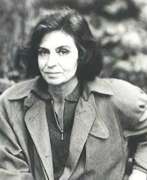

Maria Inês Ribeiro da Fonseca, also known by her pen name Menez, is a Portuguese artist who played a pioneering role in the development of abstract art in her country.
In her earliest works, Menez demonstrated a poetic sensibility that clearly reflected the influence of the famous Paris School, and adopted a distinctive form of lyrical abstraction that had a great influence on the artistic era. In the late 1950s, the artist skilfully transformed the ambiguity between figuration and abstraction in her vivid chromatic atmospheres, delving into a Neo-Impressionist perspective that skilfully suggested inner space.
In the 1980s, Menezes, in her deeply individual manner, gracefully overcame the paradigm shift that led to the revival of figurative painting, firmly establishing her unique artistic language to which she remained faithful to the end.
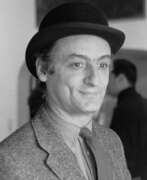

Larry Rivers (born Yitzroch Loiza Grossberg) was an American artist, musician, filmmaker, and occasional actor. Considered by many scholars to be the "Godfather" and "Grandfather" of Pop art, he was one of the first artists to merge non-objective, non-narrative art with narrative and objective abstraction.
